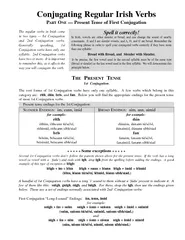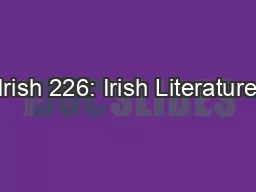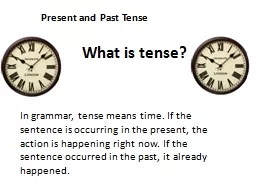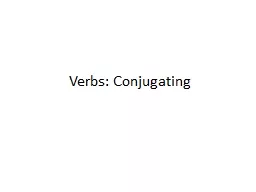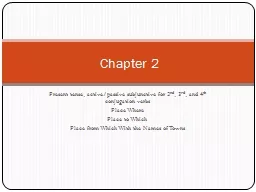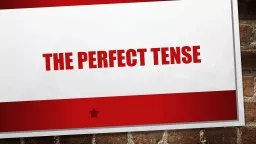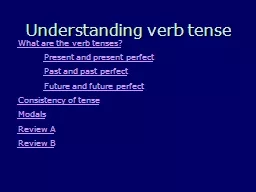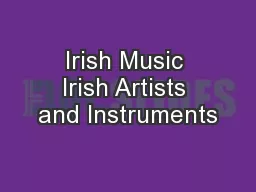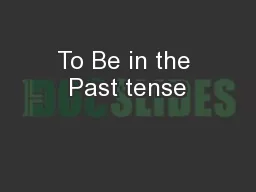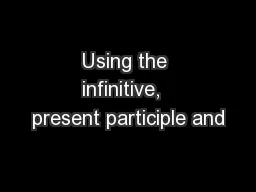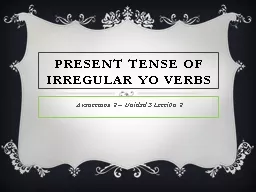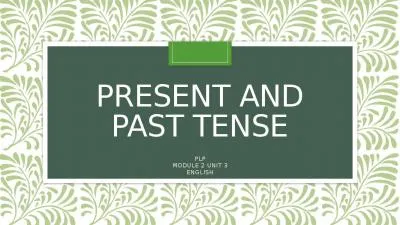PDF-Conjugating Regular Irish erbs ART NE Present Tense o
Author : stefany-barnette | Published Date : 2015-05-20
Generally speaking 1st Conjugation verbs have only one syllable 2nd Conjugation verbs have two or more It is important to remember this as it affects the way you
Presentation Embed Code
Download Presentation
Download Presentation The PPT/PDF document "Conjugating Regular Irish erbs ART NE P..." is the property of its rightful owner. Permission is granted to download and print the materials on this website for personal, non-commercial use only, and to display it on your personal computer provided you do not modify the materials and that you retain all copyright notices contained in the materials. By downloading content from our website, you accept the terms of this agreement.
Conjugating Regular Irish erbs ART NE Present Tense o: Transcript
Download Rules Of Document
"Conjugating Regular Irish erbs ART NE Present Tense o"The content belongs to its owner. You may download and print it for personal use, without modification, and keep all copyright notices. By downloading, you agree to these terms.
Related Documents

